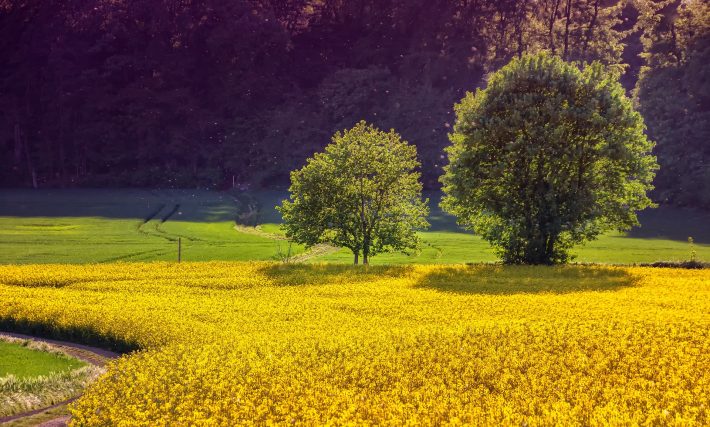Insect diversity boosted by combination of crop diversity and semi-natural habitats
To enhance the number of beneficial insect species in agricultural land, preserving semi-natural habitats and promoting crop diversity are both needed, according to new research published in the British Ecological Society’s Journal of Applied of Ecology.

The study, by researchers in Sweden, the UK, Italy, Germany, Spain and France, found that increasing the diversity of crops in agricultural landscapes increased the diversity of beneficial insects such as pollinators. However, this benefit was only seen in landscapes with high proportions of semi-natural habitats such as forests and grassland.
In landscapes with both high crop diversity and semi-natural habitat cover, the researchers observed an increased diversity of ground beetle species as well as pollinators like bees and hoverflies. These insects have the potential to benefit crops through predating pests or pollinating flowering crop plants, both important for crop yields.
The same effects were not found for spiders, which surprised the researchers. “We expected pollinators to benefit because they are a highly mobile species, but the difference between ground beetles and spiders is harder to explain since both share similar adaptations to inhabit local crops.” said Guillermo Aguilera of the Swedish University of Agricultural Sciences and lead author of the study.
Many beneficial insects and invertebrates are in decline, partly due to intensive crop management practices and a loss of semi-natural habitats from agriculture land, meaning the results have important implications. Guillermo Aguilera said: “We show that increasing local insect communities is possible in landscapes with semi-natural habitats by increasing crop diversity. Therefore, reducing the arable land and increasing semi-natural habitats is not always the only way for obtaining benefits from insects.”
Insects and other invertebrates provide important ecosystem services. “Ground beetles and spiders are predators of species that can become pests. Wild pollinators have one of the most important roles in flowering crops. Both services, pest control and pollination, are important for the final crop yield.” explains Guillermo Aguilera.
A greater diversity of crops may benefit pollinators through giving them a more varied and continuous food source. Oilseed rape, the most abundant flowering crop in the study area, provides massive resources for pollinators. However, its flowers are only open for a short period of time. Growing other crops that flower throughout the year could help support pollinators.
Semi-natural habitats provide nesting sites and additional food for both pollinators and predators. They’re likely to be particularly beneficial to mobile species of ground beetles which often colonise crop fields from these habitats.
The researchers compiled data from seven previous studies that looked at invertebrate abundances in crop fields. The data spanned 154 crop fields in southern Sweden, an area consisting of arable land and semi-natural habitats, like grassland and woodland, between 2007 and 2017.
The ultimate goal was to investigate the effect of crop diversity in the landscape with local communities of invertebrates
– said Guillermo Aguilera. “After obtaining the invertebrate information and the coordinates of the fields where they were collected, we analysed the diversity of crops present in the landscape at the time of the sampling as well as the amount of semi-natural habitats such as grasslands.”
The research focussed on southern Sweden, the most agriculturally important region in the country in terms of crop production. While this gave the researchers a large study area, they acknowledge that it’s hard to generalise the results to a more global landscape.
Guillermo Aguilera said “It would be interesting to see what happens in other landscapes with a higher crop diversity by default than Sweden. It would also be interesting to look at how invertebrate communities respond to other forms of diversification in agriculture landscapes. For instance, the management of certain crops is something that can vary a lot between countries or regions.”
You can read the article for free (for a limited time) here:
https://besjournals.onlinelibrary.wiley.com/doi/10.1111/1365-2664.13712
Media contacts:
Davy Falkner, Media Relations Officer, British Ecological Society
Email: davy@britishecologicalsociety.org, T: +44 (0)20 3994 8255, M: +44 (0) 7525 966 919
Like what we stand for?
Support our mission and help develop the next generation of ecologists by donating to the British Ecological Society.